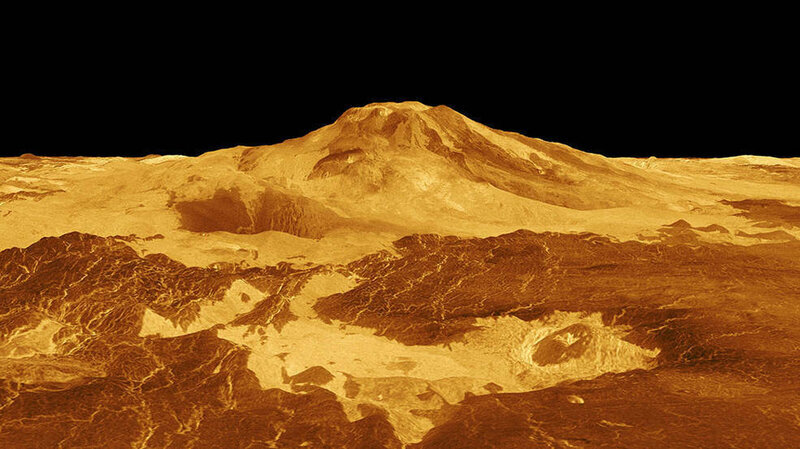21.03.2023

This computer-generated 3D model of Venus' surface shows the summit of Maat Mons, the volcano that is exhibiting signs of activity. A new study found one of Maat Mons' vents became enlarged and changed shape over an eight-month period in 1991, indicating an eruptive event occurred.
NASA/JPL-Caltech
Planetary scientists announced some big news this week about our next-door neighbor, Venus. For the first time, they had found direct evidence that Venus has active, ongoing volcanic activity. Analyzing decades-old data, they identified a brand new volcanic caldera forming over the course of just a few months.
"It's a big deal," says Dr. Martha Gilmore, a planetary geologist and Professor at Wesleyan College. "It's a big deal in that there are no other planets, actually, where we've seen active volcanism."
No other planets, that is, except Earth. (Moons don't count - sorry Io!)
Martha and other "Venusians" – that is, Venus specialists ("We are Venusians," Martha says. "That's how we separate ourselves from the Martians") – talk about Venus as Earth's "planetary twin." Their similar size, makeup and location mean they started out pretty looking a lot alike. Both, for example, had volcanoes and, probably, oceans.
"Volcanism is what maintains atmospheres and geologic activity and allows planets to be habitable," Martha says. "The Venus climate is thought to have been able to maintain liquid water for perhaps billions of years."
What makes that fact so striking is how inhospitable a place Venus is now – crushing pressure, a toxic atmosphere and a surface temperature around 850 degrees Fahrenheit.
So, what happened? How did Earth and its closest sibling diverge so sharply?
On today's episode, Martha talks with scientist in residence Regina G. Barber about what studying Venus can tell us about the past and the future of our own planet.
Quelle:npr
